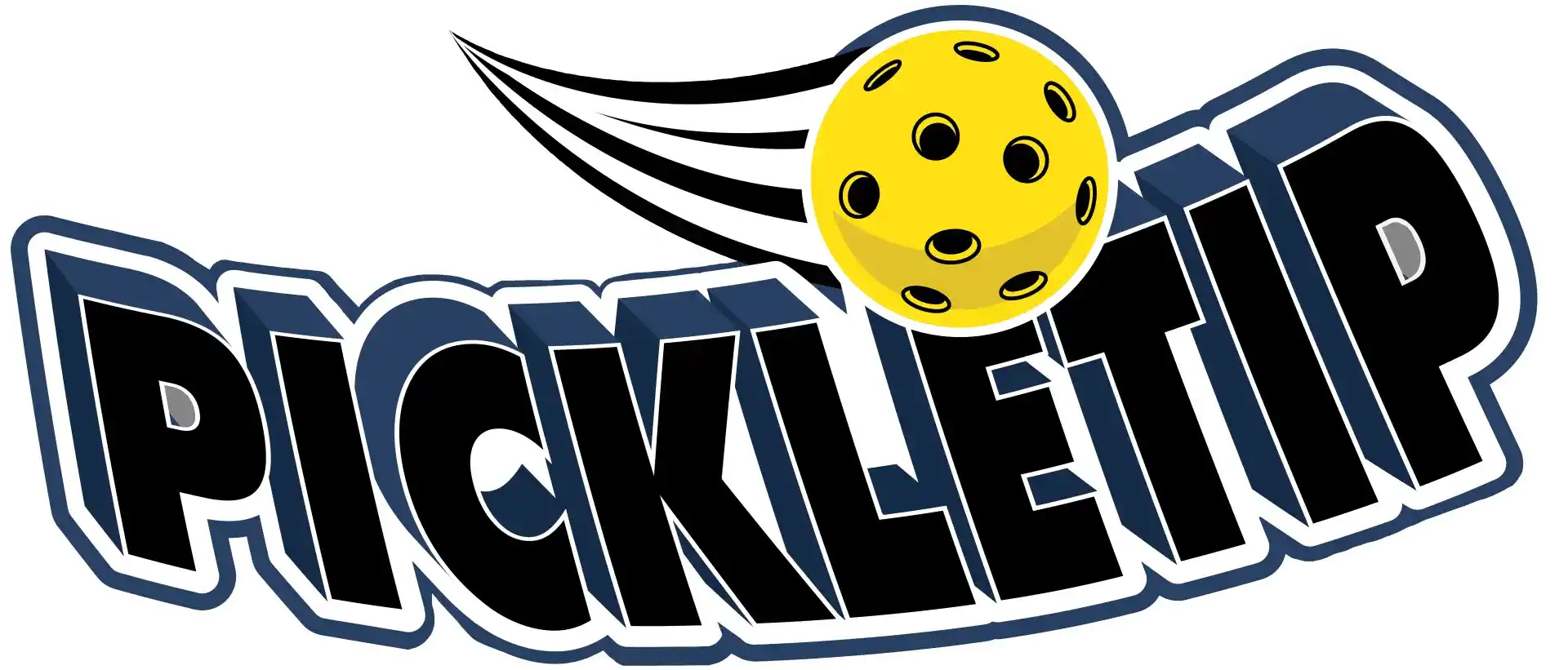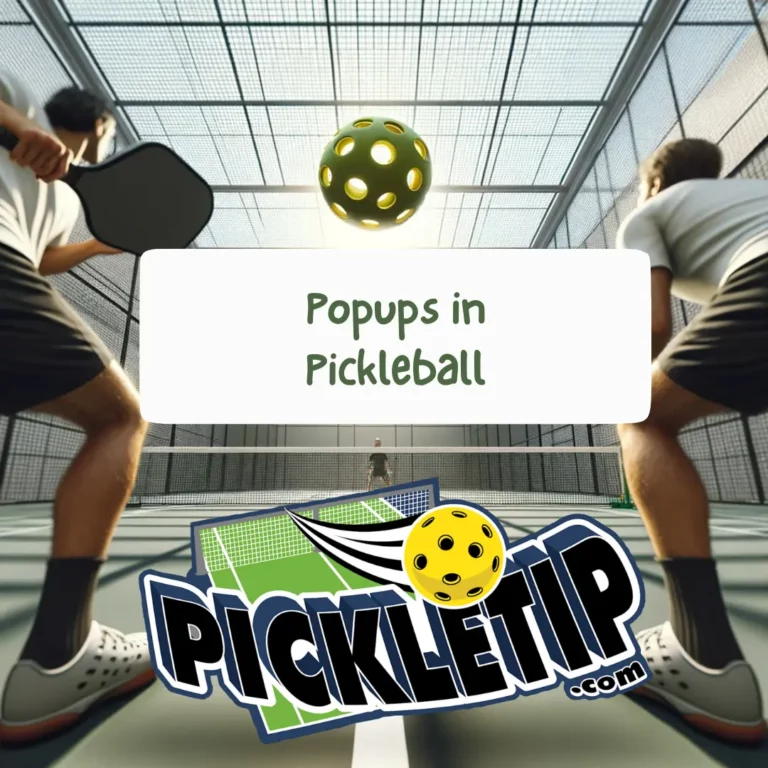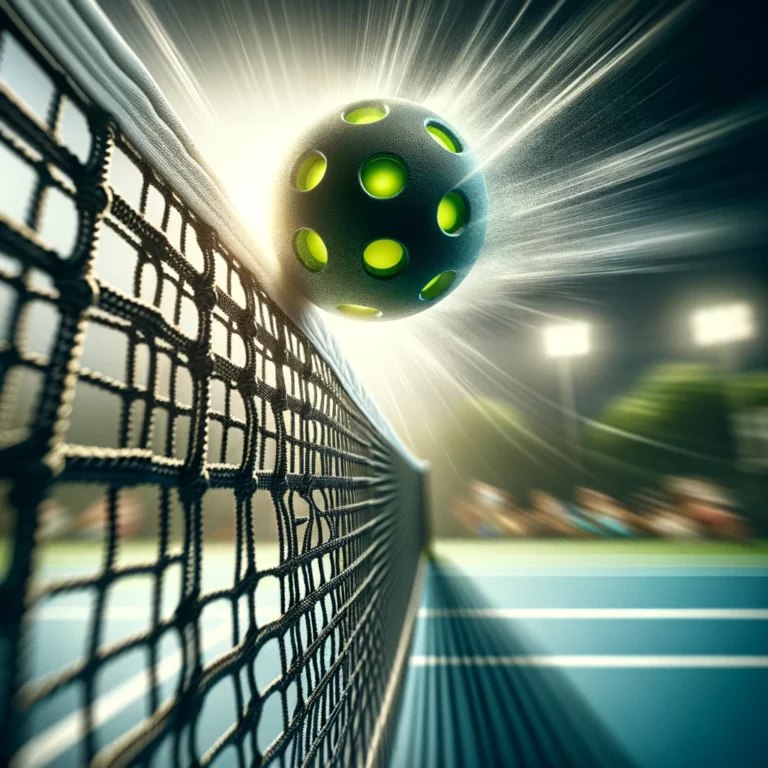Master Pickleball: Get to the Net
Get to the Net for Game-Changing Strategy
Mastering the art of getting to the net in pickleball can drastically change the game’s dynamics.
The fundamental premise is that by positioning yourself at the net before your opponents, you significantly influence the flow and outcome of the game. This strategy is rooted in the mechanics of pickleball and the geometry of the court, offering a multifaceted advantage to the team that successfully executes it.
Net Control
Controlling the net in doubles pickleball restricts the opposing team’s shot options. When you’re at the net, you effectively shrink the playable area for your opponents, making it harder for them to hit deep shots without risking them going out of bounds. This limitation forces them into a narrower selection of responses, often leading them to attempt more precise shots, which inherently carry a higher risk of errors. The pressure to avoid the net players can lead to opponents making unforced errors or choosing less optimal shots, directly benefiting the net-controlling team.
Offensive Control
Being at the net opens up a broader array of offensive shots for your team. From this position, you can more easily direct the ball into open areas of the court, exploit gaps in the opponents’ defense, and execute shots with a steep downward trajectory, making returns more challenging. The net position allows for aggressive volleying, quick reflex exchanges, and the ability to put away balls that are lifted too high by the opponents. This aggressive positioning encourages a proactive playstyle, keeping your opponents on the defensive and disrupting their ability to set up strategic plays.
Force Them to Play Defense
A team that dominates the net forces the opposing team into a defensive posture. In pickleball, defensive play is often reactive and less likely to score points directly. When a team is constantly on the defensive, they are more focused on returning the ball over the net than on placing their shots strategically. This shift in focus can lead to a passive playstyle, where the primary goal becomes merely keeping the ball in play rather than actively seeking to win points.
Take Back Control of the Net
Implementing this strategy effectively requires teamwork, communication, and the ability to quickly transition from the baseline to the net following the serve. This involves both players understanding their roles, mastering the art of the third-shot drop (a soft shot that lands in the kitchen, allowing the serving team to move forward), and being able to volley confidently.
Getting to the net in doubles pickleball is a game-changing strategy that combines spatial control, psychological pressure, and tactical superiority to tilt the game in your favor. It’s a proactive approach that not only limits the opponents’ options but also amplifies your team’s offensive capabilities. To master this strategy, players must develop a nuanced understanding of court positioning, shot selection, and the timing of their forward movements, all of which are critical components for dominating the game from the net.
Why Getting to the Net Matters
A receiver getting to the line creates offense and puts the serving team on defense.
The serving team, positioned deep in the court, becomes vulnerable, with their feet exposed as targets for an easy pop up.
Conversely, the team at the NVZ line protects their feet with the net’s help.
Strategic Advantage at the NVZ Line
Being at the NVZ line allows for the use of aggressive angles, easily disrupting the serving team’s position.
This position makes it challenging for the serving team to execute a successful third shot drop.
Executing the Perfect Return
Most players can hit a slow, deep return to reach the NVZ line. Slower players should opt for a return with some loft, allowing ample time to get to the line.
Powerful serves may force a short return, but gaining ground and hitting a reset helps in reaching the NVZ line.
Teamwork and Strategy
A good partner might poach to help the receiver get to the NVZ line, forming a defensive wall.
Moving as a Unit
The effectiveness of reaching the net is greatly enhanced when partners move in tandem, maintaining a balanced positioning that covers the width of the court. This coordinated movement ensures that there are no gaps in the court that opponents can exploit. When one player moves forward to the net, their partner should mirror this movement, maintaining a parallel alignment. This synchronization in movement is crucial for covering both the straight shots and the crosscourt angles. By moving as a unit, you and your partner ensure that you can both participate in volleys and apply pressure from the net, making it challenging for opponents to find open spaces.
Stay Linked With Your Partner
A key element of teamwork at the net involves understanding and anticipating each other’s movements and decisions. For instance, a good partner might poach, moving across to intercept a shot, to help the receiver get to the non-volley zone (NVZ) line more effectively. This act of poaching is not just about aggressively taking shots but also about forming a defensive wall that limits the opponents’ options. This requires a high level of trust and communication between partners, as one player’s decision to poach should be supported by the other’s readiness to cover the vacated space.
Building a Defensive Wall
The strategy of forming a defensive wall at the NVZ line is underscored by the statistic that approximately 75 percent of rallies are won by the team at the NVZ line. This highlights the tactical advantage of establishing dominance at the net. The “wall” is not just a physical barrier but a psychological one as well, projecting a sense of impenetrability to the opponents. The presence of both players at the NVZ line, moving in harmony, significantly reduces the angles and opportunities for the opposing team to find winners. The defensive wall strategy capitalizes on the reduced reaction time of the opponents, forcing them into making more mistakes or opting for high-risk shots.
Get to The Net
The integration of teamwork and strategic movement with the goal of controlling the net transforms doubles pickleball into a game of spatial strategy and psychological warfare. By staying linked with your partner, moving as a unit, and effectively building a defensive wall at the NVZ line, a team can exert considerable control over the pace and direction of the game. This approach not only leverages physical skills and shot precision but also demands a high level of strategic planning, communication, and mutual understanding between partners. Mastering these aspects of the game is key to dominating the net and significantly increasing your chances of winning rallies.
Frequently Asked Questions
How does getting to the net change the game?
It puts the receiving team in an offensive position, making it difficult for the serving team to maintain control.
What is the NVZ line in pickleball?
The Non-Volley Zone (NVZ) line marks a critical area of the court where players gain a strategic advantage by controlling the net.
How can I improve my return to get to the net?
Focus on hitting a slow, deep return or a lofted return to give yourself time to advance to the NVZ line.
What role does teamwork play in getting to the net?
Teamwork is crucial. A partner’s poach can create opportunities to form a defensive wall at the NVZ line.
Understanding and implementing the strategy to get to the net can significantly increase your chances of winning in pickleball. Embrace these tactics to enhance your gameplay and become a formidable opponent on the court.








One Comment